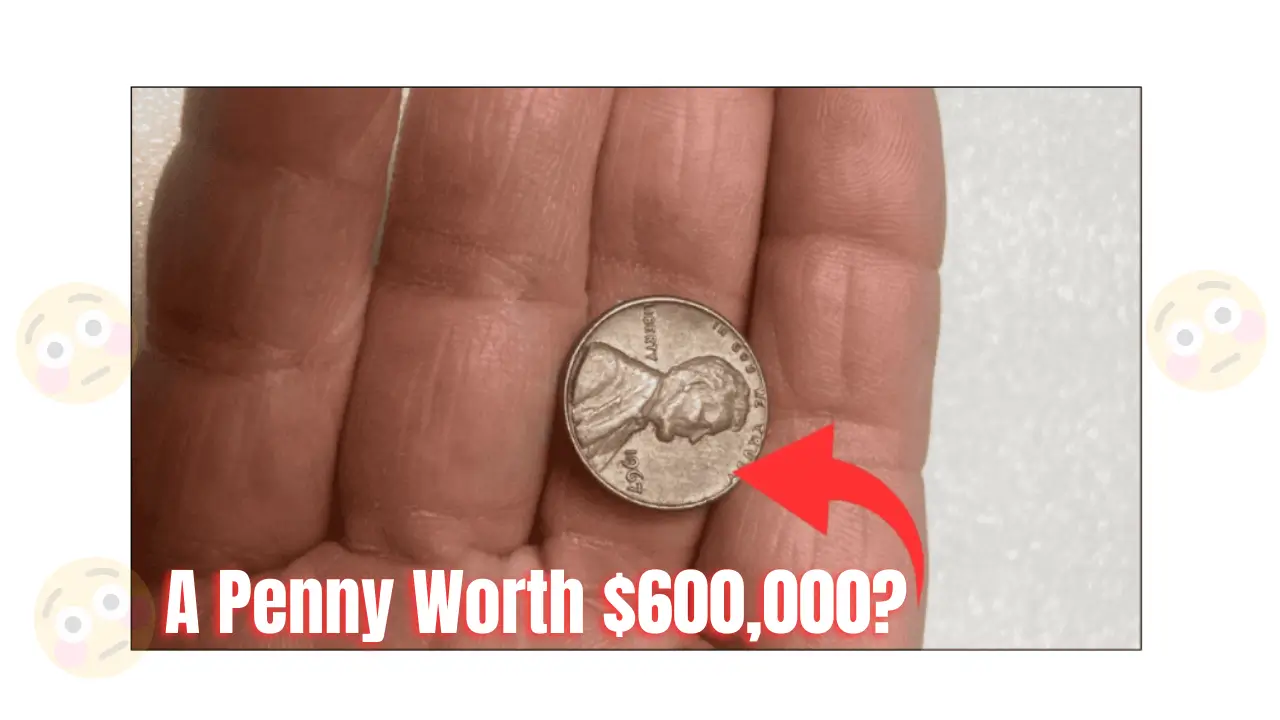Some coins are rare. Others are legendary. But one humble penny — the 1943-D bronze Lincoln Wheat Penny — has stunned collectors worldwide with a staggering auction value of $600,000. Even more surprising? Experts believe it might still be hiding in plain sight.
Imagine finding a life-changing treasure tucked away in a jar of old change. That’s not just a dream — it’s a very real possibility, thanks to this historic coin that’s turning heads in the numismatic world.
Rare 1976 Bicentennial Quarter Sells for an Astounding $5.6 Million
What Is the Lincoln Wheat Penny?
The Lincoln Wheat Penny was introduced in 1909 and remained in circulation until 1958. It holds the honor of being the first U.S. coin to feature a real historical figure — President Abraham Lincoln — on the obverse.
The coin’s reverse displays two stalks of wheat curving inward from the edges, symbolizing national prosperity. These coins are common among collectors, but only a few rare dates and minting errors have elevated certain versions to near-mythical status. And none more so than the 1943-D bronze penny.
The $600,000 Coin: What Makes It So Valuable?
The most sought-after Lincoln cent is without a doubt the 1943-D bronze Lincoln Wheat Penny. Its value stems from a highly unusual — and accidental — minting error. During World War II, the U.S. Mint switched from copper to zinc-coated steel in 1943 to conserve copper for wartime needs.
But something unexpected happened at the Denver Mint.
A few leftover bronze planchets — the copper-based blanks used the previous year — were mistakenly fed into the coin presses. These bronze blanks were struck with 1943-D dies, creating a tiny number of pennies that look copper instead of steel.
It’s believed that only a handful of these 1943-D bronze pennies exist, and they’ve fetched jaw-dropping prices at auction. One confirmed specimen sold for $600,000, and a few others may still be lurking in change drawers, forgotten coin jars, or unsearched rolls.
The Lincoln Wheat Penny Worth $2.3 Million: Still Hiding in Circulation?
How to Identify a 1943-D Bronze Lincoln Wheat Penny
You don’t need to be a coin expert to spot a possible treasure. Here’s what to look for if you think you’ve come across a 1943-D bronze penny:
1. Look at the Year and Mint Mark
Check that the date reads 1943 and there’s a small “D” mint mark beneath it — indicating it was minted in Denver.
2. Observe the Color
Most 1943 pennies are made of steel and have a silver-gray color. If yours is copper or brown, it’s worth a closer look.
3. Try the Magnet Test
A quick way to narrow it down: use a household magnet. Steel coins will stick. Bronze coins won’t. If it doesn’t stick, you may be onto something.
4. Weigh It Precisely
Steel cents weigh about 2.7 grams, while a true bronze coin weighs around 3.11 grams. A high-precision digital scale can give you an instant clue.
If your coin passes all these checks, the next step is professional authentication. The right expert can confirm whether you’ve discovered one of the rarest coins in American history.
Could the 1943-D Bronze Penny Still Be in Circulation?
Surprisingly, yes.
Despite being minted over 80 years ago, there’s a small but real chance that some of these rare coins remain undiscovered. They may have slipped through early detection and now lie forgotten in coin collections, bank rolls, or even your pocket change.
Because so few were made — and because the difference from normal 1943 cents is subtle — it’s entirely possible that a 1943-D bronze penny is still circulating, unnoticed.
That possibility keeps collectors searching and checking every penny they come across.
This 1943 Lincoln Penny Could Be Worth $78 Million — Still Circulating Today?
Why This Coin Captures So Much Attention
Coins become valuable not just because of rarity, but because of the story they tell. The 1943-D bronze Lincoln Wheat Penny represents:
- A wartime shift in materials
- A rare error that slipped past minting controls
- A chance for ordinary people to stumble on a six-figure treasure
And most of all, it shows how history, craftsmanship, and luck can come together in a coin that’s no larger than your thumbnail.
What to Do If You Think You Found One
If your coin matches the signs of a 1943-D bronze penny, don’t clean it or attempt to sell it casually. Your best move is to:
- Contact a top-tier grading service, such as PCGS (Professional Coin Grading Service) or NGC (Numismatic Guaranty Company).
- Request authentication and grading.
- Once verified, consult a reputable auction house or coin dealer to determine its full market value.
Even if your coin turns out to be a well-worn steel cent, the experience of searching is half the fun. And the next one might be the million-dollar find.
Lincoln Penny Found in Old Safe Might Be a Million-Dollar Rarity
FAQs
How much is a 1943-D bronze Lincoln Wheat Penny worth?
This rare error coin can be worth up to $600,000, making it one of the most valuable Lincoln cents ever sold.
How do I know if I have a 1943-D bronze Wheat Penny?
Check for a 1943 date with a “D” mint mark, a brown or copper tone, non-magnetic metal, and a weight of 3.11 grams.
Why was a bronze penny made in 1943 if they switched to steel?
Bronze planchets from 1942 were accidentally left in the machines at the Denver Mint, resulting in a few bronze pennies being struck in 1943.
Is it really possible that one is still in circulation?
Yes, some may have gone unnoticed for decades. They could be sitting in jars, collections, or coin rolls just waiting to be found.
Where should I take a rare penny for appraisal?
Trusted services like PCGS or NGC can verify and grade your coin professionally. Avoid casual appraisals or online guesses.

